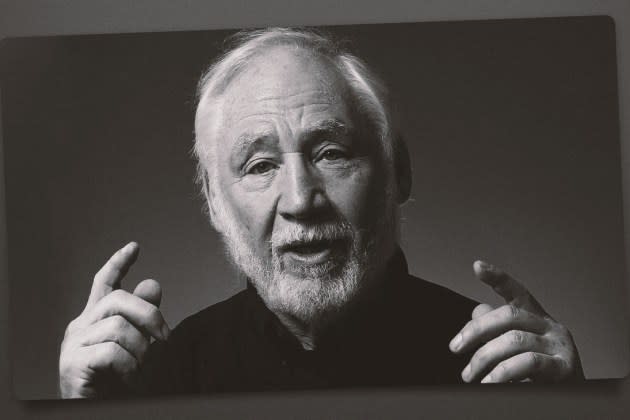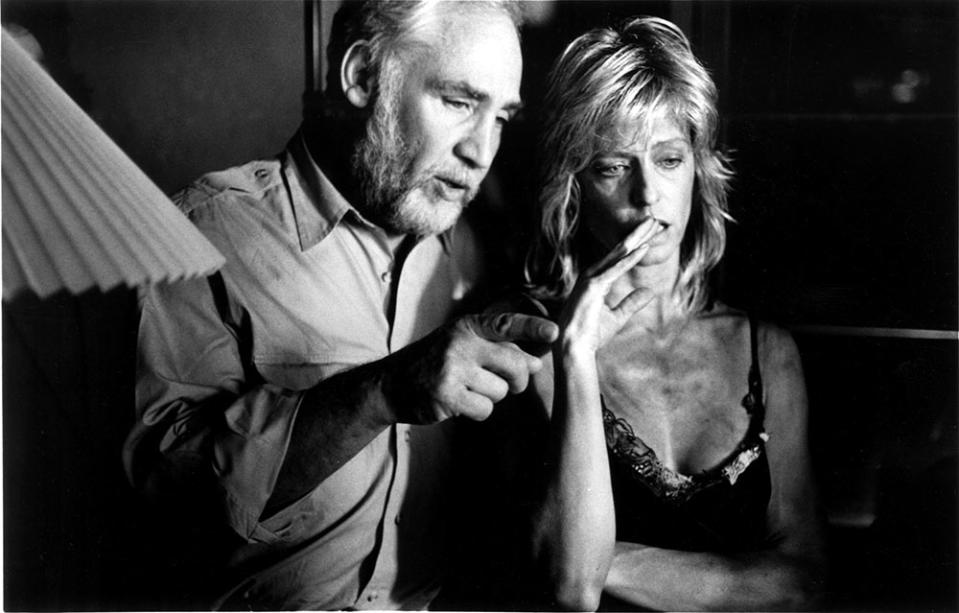Robert M. Young, ‘Extremities’ and ‘Dominick and Eugene’ Director, Dies at 99

Robert M. Young, the adventurous director who called the shots for Edward James Olmos in The Ballad of Gregorio Cortez, Farrah Fawcett in Extremities and Tom Hulce and Ray Liotta in Dominick and Eugene, died Feb. 6, his son Andrew announced. He was 99.
After getting his start in educational and documentary films, Young also directed the 1969 Peabody-winning CBS telefilm J.T., written by Jane Wagner. Revolving around a Harlem youngster (Kevin Hooks) and an alley cat, it bowed on a Saturday afternoon and was repeated in primetime as the network preempted its most popular show, Gunsmoke.
More from The Hollywood Reporter
Young also served as cinematographer, producer and co-writer with director Michael Roemer on the critically acclaimed drama Nothing But a Man (1964), featuring Ivan Dixon and jazz vocalist Abbey Lincoln as a struggling young Black couple in Alabama.
Young made his feature directorial debut with Short Eyes (1977), which starred Bruce Davison, José Pérez and several real-life prisoners in a movie filmed in the Manhattan House of Detention for Men, also known as The Tombs. He came on board after the previous director quit when threatened with bodily harm.
Young and Olmos first collaborated on Alambrista! (1977), a drama about struggling Mexican immigrants in the U.S. that earned the director the Camera d’Or prize at the Cannes Film Festival and the best picture award from the San Sebastián International Film Festival.
The two then reteamed for The Ballad of Gregorio Cortez (1982), the Tom Conti-starring Saving Grace (1986), Triumph of the Spirit (1989), Talent for the Game (1991), Roosters (1993), the 1995 telefilm Slave of Dreams and Caught (1996). He also produced Olmos’ directorial debut, American Me (1992).

Robert Milton Young was born in the Bronx on Nov. 22, 1924, and raised on Long Island. His father, Al Young, was a onetime camera operator who in 1922 founded DuArt Film Laboratories, and his uncle Joe Young (“I’m Gonna Sit Right Down and Write Myself a Letter”) is a member of the Songwriters Hall of Fame.
Young began at the Massachusetts Institute of Technology when he was 16 aiming to become a chemical engineer — that would have served him well in the DuArt lab — but left after two years for the U.S. Navy, where he spent time in New Guinea and the Philippines and decided to pursue filmmaking.
Back in the States, he graduated from Harvard in 1949 and co-founded a cooperative that put out educational films with titles like Rules and Laws and It Takes Everybody to Build This Land.
In 1956, Young and his associates created short films about sea life for the Florida park Marineland that were retooled for a feature, Secrets of the Reef. Four years later, he joined the new public affairs program NBC White Paper, traveling to the American South to make the Peabody-winning Sit-In (1961) and to Africa for Angola: Journey to War (1961).
When NBC refused to air his film about a family living in the slums of Palermo, Sicily, three days before it was to air, he quit. Execs at the network told him that “it was too powerful for American television,” he recalled.
(Thought to be destroyed, a copy of the 1961 film was saved by an NBC employee, then was recut with new footage added by Young’s son to create Children of Fate: Life and Death in a Sicilian Family, which won the 1993 Grand Jury documentary prize at Sundance and was nominated for an Oscar.)
Later, Young directed and shot a 1969 short film about painter William Kurelek that was retooled for the 2011 documentary The Maze; wrote and helmed a documentary about the Netsilik people in the Canadian Arctic called The Eskimo: Fight for Life (1970); and directed educational films with Wolper Productions for the National Geographic Society.
Young mostly stayed clear of Hollywood because he “wanted to be having adventures, I wanted to be living in the world, and I wanted to be making my films about the things that I learned in the world and the rhythms of the world — that was the idealistic kind of thought that I had,” he said in a 2004 interview for the DGA’s Visual History Program.
Nothing But a Man was inducted into the Library of Congress’ National Film Registry in 1993, followed by Gregorio Cortez in 2022 and Alambrista! in 2023.
In addition to the thriller Extremities (1986) — Fawcett had played the role of a woman who turns the tables on her attacker in an off-Broadway production — and Dominick and Eugene (1988), which had Hulce and Liotta portraying twins — Young directed other films including Rich Kids (1979) and Human Error (2004) and five episodes of Battlestar Galactica from 2004-09.
His son is also a filmmaker. “He gave me my first camera, my first job on set, and inspired me to go out and tell my own stories,” Andrew Young wrote. “He is literally the reason why I do what I do. He was a rebel in the industry who made the films he dreamed of and lived the life he wanted, whether it was trekking through the Congo, swimming with sharks or plumbing the depths of the human experience.”
His younger brother, Irwin Young, who produced Nothing but a Man and Alambrista!, died in 2022.
In his DGA interview, Young said he frequently put his own money into making films or, when studios cut off funds, completing them.
“I believe in what Carlos Castaneda said. He said that don Juan Matus says, ‘You follow the path with heart, but you know it’s a cosmic joke,’” he said. “That’s my philosophy. I mean, what is the point? Why not pursue the things that you really love and believe in, the things that energize you, the things that make you feel fulfilled?”
Best of The Hollywood Reporter